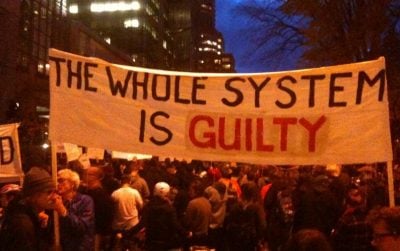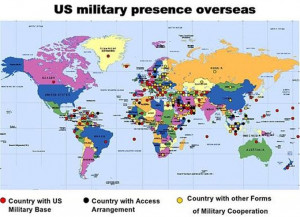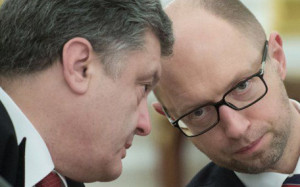“Color Revolution” Comes Home? Are Americans Also the Victims of “Regime Change”?

The United States has perfected the art of regime change operations. The US is the largest empire in world history with more than 1,000 military bases and troops operating throughout the world. In addition to military force, the US uses the soft power of regime change, often through ‘Color Revolutions.’ The US has been building its empire since the Civil War era, but it has been in the post-World War II period that it has perfected regime change operations.

Have the people of the United States been the victims of regime change operations at home? Have the wealthiest and the security state created a government that serves them, rather than the people? To answer these questions, we begin by examining how regime change works and then look at whether those ingredients are being used domestically.
Color Revolutions and Regime Change Operations
Almost from the start, the CIA’s role has been more than intelligence gathering. It has been a key player in putting in place governments friendly to the United States and conducting other operations, e.g. the CIA is currently involved in drone strikes.
One of the first regime change operations of the CIA was Operation Ajax conducted in Iran, and led by Kermit Roosevelt, the grandson of Teddy Roosevelt, who was president when the US solidified its global empire ambitions. The CIA was founded in 1947 and the regime change coup in Iran was 1953. Greg Maybury writes in “Another Splendid Little Coup“: “Placing to one side an early dress rehearsal in Syria in 1949, the Iran coup was the first post-War exercise in regime change upon the part of Anglo-American alliance…” Just this month the US government released documents showing the CIA and State Department’s planning and implementation of the coup against the democratically-elected prime minister of Iran, Mohammed Mossadegh. This release supplements one from 2013 that did not reveal the full role of the US in the coup.

Newspaper office burned in Tehran during 1953 US coup in Iran.
The Iran coup was crude compared to more modern efforts but had the ingredients that have become common – civil society protests against the government, media reports supporting the protests, agents within the government supporting the coup and replacement of the government with a US-friendly regime. The Iran coup may have been the most costly mistake in US foreign policy because it undermined a secular democratic government in Iran that could have been the example for the region. Instead the US installed the brutal Shah of Iran, whose rule ended in the 1979 revolution, in which, as Maybury reports, the US was also implicated because it felt the Shah had overstayed his welcome.
The Iran coup was perceived as a great CIA success, so it was copied in other Middle Eastern countries as well as countries in Latin America, Africa, and the Caribbean. Regime change is still a major tool of US foreign policy. There is a long-term ongoing coup campaign in Venezuela, with its most recent episode last week in which a helicopter attack on the Supreme Court was tied to the US DEA and CIA. The US has allied with oligarchs, supported violent protests and provided funds for the opposition, which has also worked to undermine the Venezuelan economy — a tactic the US has used in other coups, e.g. the coup of Allende in Chile.
The coup in Ukraine, which the media falsely calls a ‘democratic revolution,’ was, as the head of the ‘private CIA’ firm Stratfor says, “the most blatant coup in history.” The CIA and State Department played the lead roles.

Victoria Nuland handing out snacks to Ukraine protesters.
Victoria Nuland, an assistant secretary of state under Clinton, bragged that the US spent $5 billion to build civil society opposition against a government that leaned toward Russia. The government funded civil society opposition through US AID, which is the open vehicle for what the CIA used to do covertly, along with the National Endowment for Democracy. This funding was used to build oppositional civil society groups and create destabilization. They focused on the issue of corruption, which exists in every government, and built it up to a centerpiece for regime change. The US allied with extremist right-wing groups in Ukraine.
The US picked the new leaders of Ukraine. This included Petro Poroshenko, whom U.S. officials refer to as “Our Ukraine (OU) insider Petro Poroshenko” in a classified diplomatic cable from 2006 . The selected Prime Minister was Arseniy Yatsenyuk. Before the coup, Victoria Nuland told the US Ambassador to Ukraine that ‘Yats’ should be the prime minister. And, the Finance Minister was Natalia Jaresko, a long-time State Department official who moved to Ukraine after the US-inspired coup, the Orange Revolution, to become a conduit for US funding of civil society through her hedge fund. She was a US citizen whom Poroshenko made a Ukrainian on the day she was appointed Finance Minister. To top it off, fmr. Vice President Joe Biden’s son, Hunter Biden, and fmr. Secretary of State John Kerry’s longtime financial ally, Devon Archer, were put on the board of the largest private gas corporation in the Ukraine. Yet, the US media refuses to call this complete take over of the country by the United States a coup and instead describes Russia as the aggressor.

Ukraine president Poroshenko with Prime Minister Yats
The US has perfected regime change operations from the 1950s up through today. The standard method of operation is finding an issue to cause dissent, building opposition in a well funded civil society ‘movement’, manipulating the media, putting in place US friendly leaders and blaming US opposition for the coup to hide US involvement. This approach is consistent no matter which party is in power in the US.
The Kleptocratic Oligarch Coup In The United States
Let’s apply the lessons from around the world to the United States. There is no question the US is an oligarchy. We say no question because recent political studies have proven it in multiple ways.
One difference in the US is that money plays an outsized influence in US elections. The wealthy can buy the government they want through campaign donations and by anonymous spending but the tools of color revolutions are still needed to legitimize the government. Legitimacy is getting harder to buy. Many realize we live in a mirage democracy. The Associated Press-NORC Center for Public Affairs reported in 2016 the extent of the loss of legitimacy of US government:
“Nine in 10 Americans lack confidence in the country’s political system, and among a normally polarized electorate, there are few partisan differences in the public’s lack of faith in the political parties, the nominating process, and the branches of government.”
Jimmy Carter has pointed to the “unlimited bribery” of government as turning the US into an oligarchy. The government needs to use the tools of regime change at home in order to create an veneer of legitimate government.

The Donald Trump presidency, which we regularly criticize, brings a lot of these tools to the forefront because Trump beat the system and defeated the elites of both parties. As a result, Democratic Party propaganda is being used to undermine Trump not only based on his policies but also through manufactured crises such as RussiaGate. The corporate media consistently hammers home RussiaGate, despite the lack of evidence to support it. Unlike the Watergate or Iran-Contra scandals, there is no evidence that Trump colluded with Russia to get elected. And, the security state – the FBI and the agencies that conduct regime change operations around the world – is working to undermine Trump in a still unfolding domestic coup.
Civil society also has a strong role. John Stauber writes that:
“The professional Progressive Movement that we see reflected in the pages of The Nation magazine, in the online marketing and campaigning of MoveOn and in the speeches of Van Jones, is primarily a political public relations creation of America’s richest corporate elite, the so-called 1%, who happen to bleed Blue because they have some degree of social and environmental consciousness, and don’t bleed Red. But they are just as committed as the right to the overall corporate status quo, the maintenance of the American Empire, and the monopoly of the rich over the political process that serves their economic interests.”

Civil society groups created or aligned with the Democratic Party are defining the new form of false-resistance as electing Democrats. The Democrats, as they have done throughout history as the oldest political party, know how to control movements and lead them into ineffectiveness to support the Democratic Party agenda. We described, in “Obamacare: The Biggest Insurance Scam in History,” how this was done skillfully during the health reform process in 2009. This new resistance is just another tool to empower the elites, not resistance to the oligarchic-kleptocrats that control both parties. In fact, a major problem in progressive advocacy is the funding ties between large non-profits and corporate interests. The corruption of money is seen in organizations that advocate for corporate-friendly policies in education, health care, energy and climate, labor, and other issues.
Color Revolution Tools Used In The US
Now the tools the US uses for regime change around the world are being used at home to funnel activist energy and efforts into the Democratic party and electoral activities. In order to resist this new “resistance” we need to be aware of it and how it operates. We need to see through propaganda, such as RussiaGate, and attempts to manipulate the masses through scripted events that are portrayed as organic, such as the recent “sit in” by Rep. John Lewis and Sen. Cory Booker on the Capitol steps, or through highly emotional cultural content that portrays the plutocratic parties as parties of the people. We have to remember that the root issue is plutocracy and the US has two plutocratic parties, often referred to as “The Duopoly.”

We must continue to focus on the issues that are in crisis such as the economy, health care, education, housing, racism, inequality and militarization at home and abroad. We must fight for these issues independent of political party. We must be clear and uncompromising in our demands so that we are not taken off track. And we must have a clear vision of the future that we want to see.
Popular Resistance is a co-convener of the People’s Congress of Resistance. The People’s Congress will bring people together from around the US to meet in Washington, DC this September to outline a vision from the grassroots. A draft of that vision will be circulated over the next few months so that many people will provide input. Check out the People’s Congress here and get involved however you are able.
All images in this article are from the authors.

